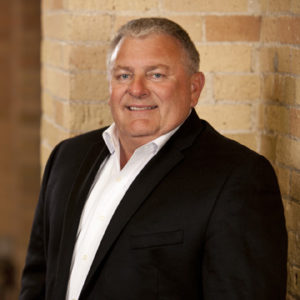Meet the EnergyPrint Leadership Team

In early 2021, Jim Schultz became the Board Chair and largest stockholder of EnergyPrint. Jim started his career with the Trane Company in 1971, when the company had less than $200 million in commercial sales. Jim retired from Trane 27 years later, as the VP and GM of the $5 billion commercial business. No single individual drove Trane’s 14% per year growth during this period – but no individual did more to drive this outcome than Jim. Since Jim retired, he has been helping another great HVAC Company – Daikin. Jim is an Iowa State engineering graduate.

Jim’s first instinct for EnergyPrint was to invite in a strong leader as CEO, who had the right mix of talent and experience. Wade Smith was chosen because he led 7 successful start-up & turnaround assignments, (the largest was $250 mm of annual sales). Two of these turnarounds happened while Wade was working for Jim Schultz. Wade and Jim think alike, they work well as a team. They understand how market forces differ in commercial building market segments. Most of Wade’s career was with high-tech electronic controls, software and wireless data transfer systems, where Moore’s law creates opportunities that can be leveraged in strategy. Wade is also a licensed Professional Engineer, from the University of Wisconsin.
We’d love to crow about the rest of our team – but we don’t want to encourage headhunters. Suffice to say, that the team is comprised of “A” players who operate with enthusiasm.
The “Why” and “What” behind EnergyPrint’s New Strategy
During 2021, EnergyPrint made many changes to raise our business professionalism – to track and lower cost, to provide performance incentives for staff, to raise prices, to boost margins, to improve scalability. In other words, our priority was to strengthen EnergyPrint’s core business foundation, so it would support a much larger company. Sales were flat at $1.2 million in 2021, but earnings topped $150,000 in the second half, after losing $135,000 in the first half. The company logged its first profitable year.
At the same time, Wade and the board led an effort to understand EnergyPrint limitations and opportunities and to clarify EnergyPrint’s mission – which is simply to “drive energy savings”. Our data base includes 6,800 buildings EnergyPrint has served for 3 year or more during our 12-year history. These buildings saved an average of 12.7%, or $36,000 a year. That means EnergyPrint annual service fees (about $1,000 a year) were paid back after only 10 days of savings. The database average building is 140,000 square feet, but that average has grown over the years, to its current level of 180,000 sq. ft. The 10-day payback ratio seems unbelievable – but it is based on utility meters that do not lie. The numbers are real. According to the DOE (the US Department of Energy), average savings of our many competitors is only 6%.
Hidden from view – 94% of commercial buildings are less than 50,000 square feet, and only 10% of these smaller buildings enjoy the benefits of a building management system. Building management systems are expensive to buy, install and maintain – they could not be justified in these smaller buildings. EnergyPrint (& competitors) have ignored this market segment.
Instead, EnergyPrint solicits business nationwide through HVAC service company dealers who focus on larger buildings. EnergyPrint deals with thousands of utilities every month – this is no small task. To lower our cost and improve our scalability, we should develop API (application program interface) links to utility data, which virtually eliminates the manpower we use today contacting every utility and loading their data every month. To justify API software, one needs volume with a short list of utilities – and that implies some geographic concentration. But to boost sales in a concentrated market (like, Minneapolis and St Paul for example), one must penetrate the smaller building segment which accounts for most of the market potential.
“What would have to be true to attract small building customers?” This became the focus of our thinking because buildings under 50,000 sq. ft.:
- Represent 94% of commercial buildings – most of the market potential
- Enable a geographic focus & development of API that will lower cost and boost scalability
- Consume more energy, so savings % can be greater – 90% lack building management
- Have been under-served for decades – so there is far less competitive pressure
Enter Moore’s law, which is the observation made by Intel co–founder Gordon Moore in 1965 that the number of transistors on a chip doubles every year while the costs are halved.
Thermostats are changing – the micro they use is cheaper and bigger. By choosing a micro that also carries a Wi-Fi circuit, thermostats are suddenly capable of working with cloud-based automation to do 70% of what expensive building management systems do. The “chip” which enables this, costs less than $5 – so hardware cost is trivial. This cost looks even smaller when compared to the savings cloud-connected thermostats can generate if the cloud-based system that they connect to is carefully designed and easy to manage with artificial intelligence.
Wade Smith ran Trane’s controls division for 5 years, reporting to Jim Schultz. During those years, Trane control sales rose from $5 mm to $25mm yielding 72% return on net assets. The division continued to grow after Wade moved on to nearly $500 million when Jim retired – roughly 10% of Trane’s commercial business. More importantly, controls gave Trane a serious competitive advantage in the service business, because Trane controls incorporate diagnostics that lower the cost to service HVAC equipment. Trane never called this the “internet of things”, but all Trane commercial control systems can be tied to the mother ship – and they have been capable of this since 1989 when Wade was the VP and GM of Trane’s control division.
There are many answers to the question, “What would have to be true for EnergyPrint to succeed with smaller buildings?” But one answer fits, and you probably already know that answer. EnergyPrint will offer the cloud-based building automation using low-cost internet connected thermostats that control mid-range (5 to 25 ton) rooftop HVAC units. These units (and thermostats) are the dominate HVAC system used in buildings from 5,000 to 50,000 square feet since 1975. EnergyPrint will be thermostat brand agnostic, but we will favor those thermostats that are the most capable of driving savings and performance, at the lowest cost.
EnergyPrint is not alone in this space – but we have more know-how and experience creating algorithms that reduce energy use, boost performance, and diagnose issues. And we are the only competitor who sells through HVAC service contractors who maintain a trust relationship with the owners of these buildings. We will also be the only building management system competitor who will verify performance at the utility meter, on every job we sell. The opportunities to differentiate further – and to stay one jump ahead of competition going forward – abound.
For example, one thermostat manufacturer also controls humidifiers and dehumidifiers directly from the thermostat. Another is sensing CO-2 to determine the concentration of occupants, to match outside air ventilation rates to demand. They also track building pressure to control exhaust. Another encourages up to 4 wall sensors that can be weight-averaged, or control can be based on the one sensor with the greatest demand. These controls were not cost effective in 2021 – but they are now, thanks to Moore’s law. And each opens the door to cloud-based algorithms that drive performance, efficiency, and diagnostics. EnergyPrint will lead this parade.
What will the future bring? Hang on to your hat. Those with imagination who are networked in the HVAC industry won’t just respond to changes – they will cause these changes to happen. There is an old story about the challenge of a rat finding the cheese in a rat-maze. The strategy question is, “What must be true for the rat to find the cheese when it has been moved?” This is the question Wade Smith ghost wrote for a Trane executive in 1985, who used it in a speech to drive home the importance of responding to changes in the marketplace. But the executive altered the story, to assert that Trane would move the cheese, so Trane always knows where the cheese is. It’s a story that most at Trane have heard – it’s part of their culture that few will forget. Hey – they are cheddar-heads from Wisconsin, and proud of it.
Well, the thermostat industry has discovered a cache of cheese – and EnergyPrint will help them place the curds in the industry’s competitive maze to our mutual advantage.
This is the new strategic intent of EnergyPrint.
But more importantly, this is the kind of thinking that is becoming part of the EnergyPrint culture – the same culture that enabled a small-town western Wisconsin company to grow by a factor of 8 during the depression between 1930 and 1940, and from $200 mm to $5 billion when Wade and Jim were pulling in the harness. It’s not rocket science – you just have to invest in who, what, where and when it makes sense to do so. You have to move the cheese.
Your EnergyPrint team is excited, and quite optimistic, that this company will achieve great things. We believe EnergyPrint has the right “who, what, where and when” to drive results spectacularly. We hope you agree.
If you have an interest in investment in EnergyPrint, and you are a qualified investor, please do not hesitate to contact Wade W. Smith, EnergyPrint CEO at 201-681-4494, or wade.smith@energyprint.com. He would love to hear from you.

